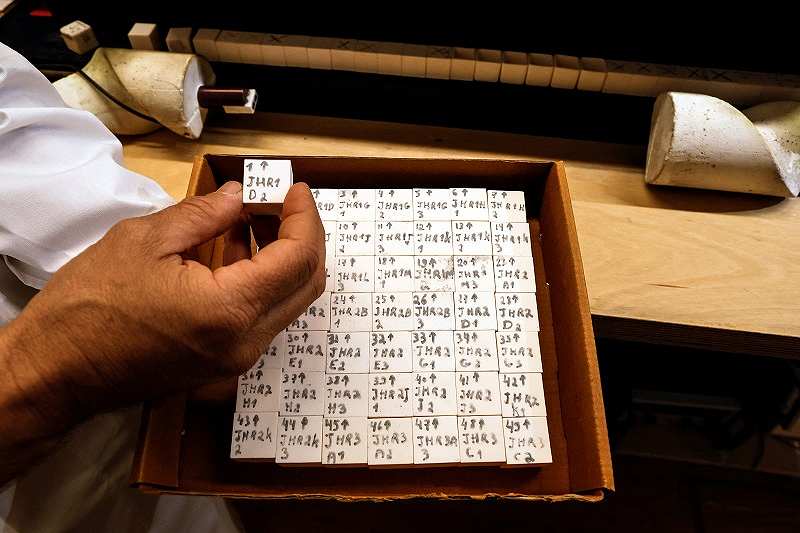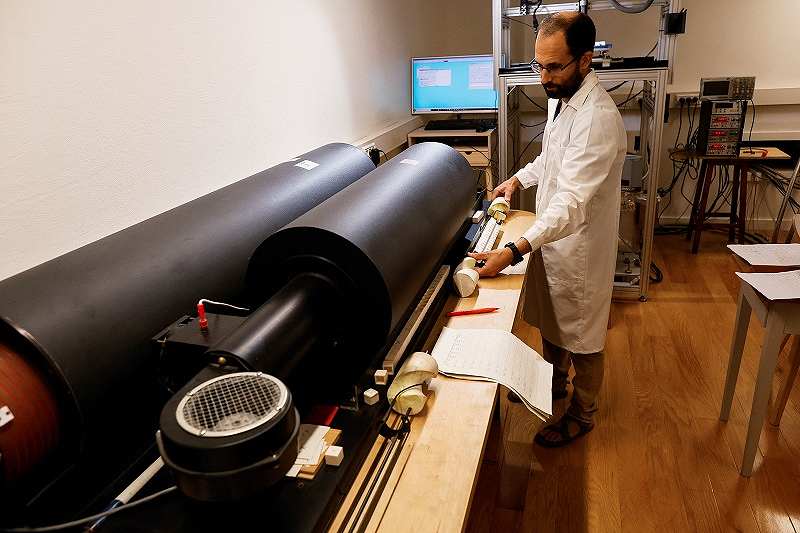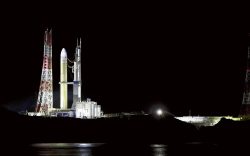
Yoav Vaknin of the Institute of Archaeology at Tel Aviv University and the Paleomagnetic lab at the Hebrew University of Jerusalem holds a box containing a sample from an archaeological site and arranges samples from an archaeological site.
17:18 JST, November 17, 2022
JERUSALEM (Reuters) — Ancient ruins tell only a partial story of the epic sieges and conquests recounted in the Hebrew bible, but scientists are using new dating technology to piece together historical events to see how closely they resemble those described in scripture.
Using readings of ancient geomagnetic fields which have been preserved over time in mud bricks from sites destroyed by fire and in two collections of ceramic objects, scientists from the Hebrew University and Tel Aviv University have dated these remnants more accurately.
The method has been used in the past but never to this extent.
“Since we have a very large database, we can compare many different sites according to the magnetic signal and this way reach a very accurate dating method,” Yoav Vaknin, of the Institute of Archaeology at Tel Aviv University, told Reuters.
The study’s findings indicate, for example, that the army of Hazael, King of Aram-Damascus first mentioned in the Book of Kings, was responsible for the destruction of several cities including Tel Rehov, Tel Zayit and Horvat Tevet.
In terms of its modern application, Vaknin said the magnetic field and its activity is one of the biggest mysteries facing scientists and this technology could be used to predict how the magnetic field will change and behave in the future.

Yoav Vaknin arranges samples from an archaeological site as a part of research which uses geomagnetic fields to date and verify Biblical accounts, in Jerusalem on Oct. 25.
"Science & Nature" POPULAR ARTICLE
-

Mass Oyster Die-Offs Confirmed in Japan’s Seto Inland Sea; High Water Temperature Cited as Primary Cause
-

Genome Study Reveals Milestone in History of Cat Domestication
-

Big Leap in Quest to Get to Bottom of Climate Ice Mystery
-

Security Camera Footage Vulnerable to Outside Access; Investigation Finds 3,000 Pieces Exposed Online
-

Paws on Parade: Nairobi’s Dogs Dazzle at ‘Pawchella’
JN ACCESS RANKING
-

Keidanren Chairman Yoshinobu Tsutsui Visits Kashiwazaki-Kariwa Nuclear Power Plant; Inspects New Emergency Safety System
-

Imports of Rare Earths from China Facing Delays, May Be Caused by Deterioration of Japan-China Relations
-

University of Tokyo Professor Discusses Japanese Economic Security in Interview Ahead of Forum
-

Japan Pulls out of Vietnam Nuclear Project, Complicating Hanoi’s Power Plans
-

Govt Aims to Expand NISA Program Lineup, Abolish Age Restriction

























